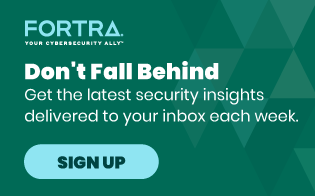One of the aftereffects of Covid and the mad rush to work from home was the fast adoption of cloud-based services. Those companies that could afford to create vast VPN networks maintained their traditional boundaries, but many had to compromise and accept the risk of allowing employees to connect directly to cloud-based services.
This created a problem not seen before: A lack of oversight as to how employees are sharing data without having visibility to the employee, from the endpoint to the service being used.
What is the one common piece of hardware that consistently exists across a company today? The company owned laptop/desktop of course.
It could be argued that your company endpoints are now your new network and for the most part, they are still unmanaged in many ways.
This is where Digital Guardian Secure Service Edge (SSE) can bring that new network under management again.
Technology has long had an over-reliance on acronyms, so let’s look at this from a company use case standpoint. We'll review some of the obligations they are under to adhere to laws and regulations, the ongoing need to meet customer demands, along with their requirement to maintain the integrity and control of information they use to conduct business.
Companies need to demonstrate they are making a “best effort” to manage the data they collect or are provided through interactions with customers or third parties. If a loss of information occurs and you need to answer to some form of oversight, those parties will want to ensure you are trying and leveraging the best technology available to you as a company.
“We didn’t know” is not a best effort answer.
Leveraging Digital Guardian SSE gives you the information you need to manage potential loss risk as it starts with the individual endpoints. The solution's inline capabilities monitor, report and provide companies with the ability to control both access to services (internal and cloud) and the information we use and store in those services.
Here are a few ways Digital Guardian SSE can help organizations manage data stored in the cloud:
DG SSE can inform organizations when their employees are using cloud file sharing services. From there, you can evaluate and begin to apply various forms of management (from monitoring and blocking sensitive data all the way to outright blocking the service).
DG SSE can be the bridge between legacy systems and cloud services, creating that single sign-on experience that enables workflows vs. creating authentication friction with each service they must use to perform their role (layering in a zero-trust framework).
DG SSE can monitor and alert organizations to potential malicious behavior and allow you the ability to investigate and stop that behavior before it becomes a reportable incident, avoiding the need to prove you are making “best effort” to manage your company owned information.
Those are a few examples of what a “best effort” looks like in today's complex environments, and it all starts with the only remaining piece of hardware left in organizations, your endpoint.
I would encourage you to explore what the new Digital Guardian Secure Service Edge can provide you and learn how over time you can fold in additional oversight and management to avoid those “best effort” conversations.
We have all had to participate in those conversations at one time or another during our careers. Taking the next step to minimize or eliminate those conversations from happening in the future is effort well spent!

